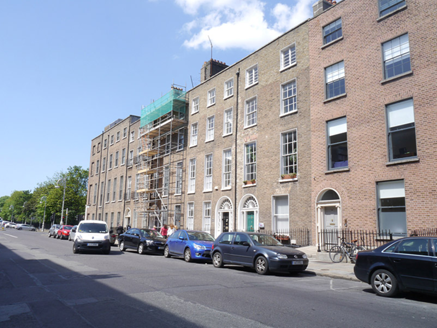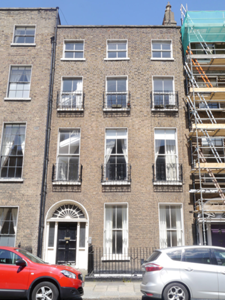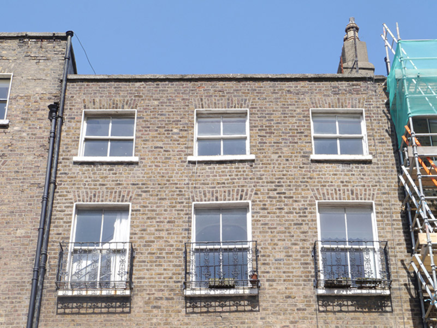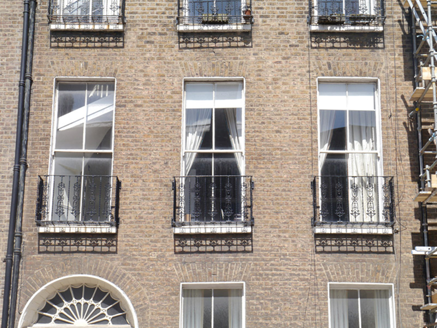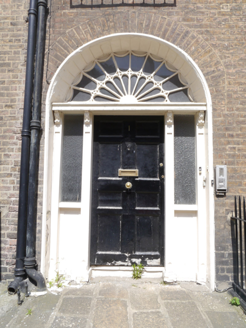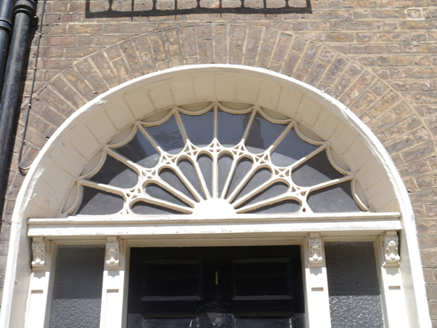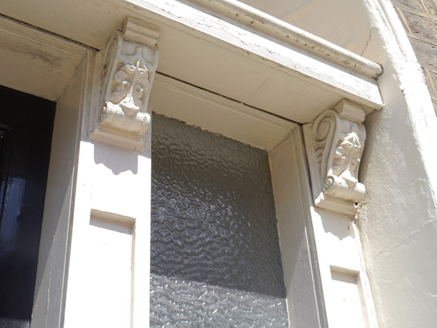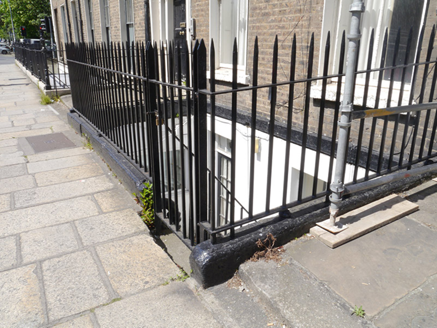Survey Data
Reg No
50100537
Rating
Regional
Categories of Special Interest
Architectural, Artistic
Original Use
House
In Use As
Office
Date
1800 - 1820
Coordinates
316809, 233396
Date Recorded
31/05/2016
Date Updated
--/--/--
Description
Attached three-bay four-storey former house over basement, built c. 1810 as one of pair with No. 2, having single-storey return to rear. Now in office use. Pitched artificial slate roof, having rendered chimneystacks to east party wall with octagonal yellow clay pots, parapet with granite coping and parapet gutters. Shared cast-iron downpipe and hopper, with replacement uPVC rainwater goods to rear. Brown brick Flemish bond walling on painted granite plinth course over painted rendered basement walling; smooth rendered walling to mainly blank rear elevation. Square-headed window openings with painted masonry sills, patent reveals and brick voussoirs, and two-over-two pane timber sliding sash windows, diminishing to upper floors, with ogee horns. Decorative cast-iron balconettes to first and second floor window openings; replacement uPVC windows to rear elevation, with plain surrounds. Round-headed door opening, having moulded surround and scalloped archivolt, doorcase comprising slender panelled pilasters with foliate console brackets, sidelights with rolled glass, plain frieze and cornice, decorative cobweb fanlight, and timber eight-panel door with beaded muntin. Paved granite entrance platform with remnants of cast-iron boot-scrape; single step to street. Replacement steel railings over painted moulded granite plinth enclosing basement area. Recent timber window beneath entrance platform and plainly detailed square-headed door opening to basement with recent glazed timber door, reached by concrete steps.
Appraisal
A late Georgian row house, built as one of a group of four. The front elevations in the terrace exhibit well-balanced proportions and fenestration grading typical of the period, while the restrained façades are enlivened by cast-iron balconettes, intact setting features and good doorcases. This house has a relatively modest doorcase with a fine cobweb fanlight. The house makes a strong contribution to the cohesive character of Mount Street Upper and the wider architectural heritage of south Dublin city. The street was built 1790-1834, the variations in the streetscape are indicative of the piecemeal nature of its construction, the north side being notably less grand than the south. The east end of the street is effectively terminated by St. Stephen's Church, creating an interesting centrepiece and terminating one of the key vistas of Georgian Dublin.
